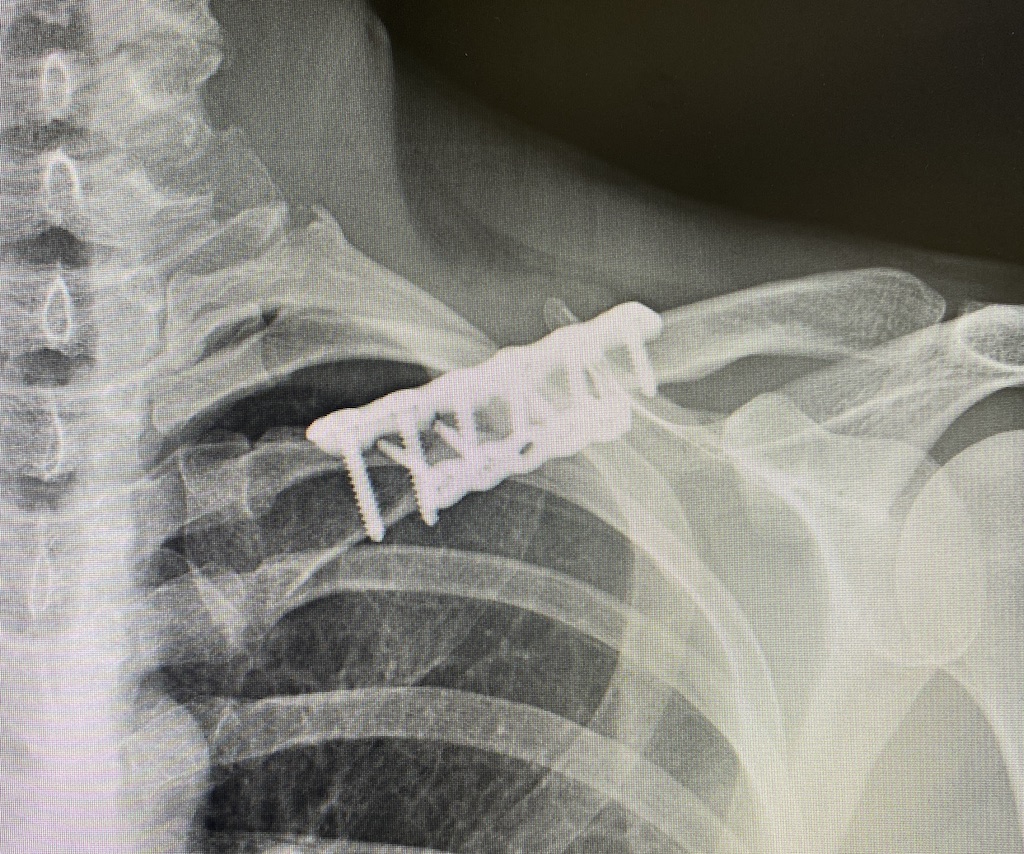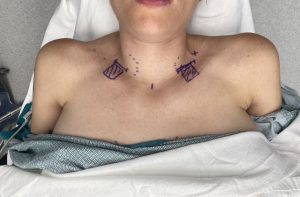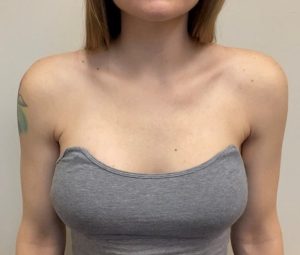Background: Shoulder narrowing surgery is commonly performed in transfemale and thus is often perceived as an exclusive transgender surgery. But in reality it is an aesthetic structural body contouring surgery that can be performed on anyone regardless of their gender identity. There may be slightly different motivations for undergoing the surgery, whether it is a cis- or transfemale, but in the end the goal is a reduction in the shape of the shoulders.
Regardless of one’s gender there are known differences in the lengths of the clavicles resulting in shoulder asymmetry. While not everyone has different clavicle lengths many patients presenting for shoulder narrowing surgery do up to 30% in my experience. Studies have shown that the human right clavicle tends to be shorter than the left. This appears to be due to the inhibition of longitudinal growth of the clavicle on the dominant side due to increased mechanical loading, particularly in axial compression. With these different lengths also comes some differences in the height of the shoulders
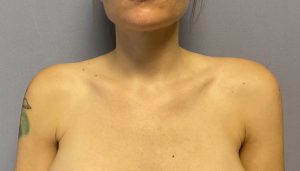
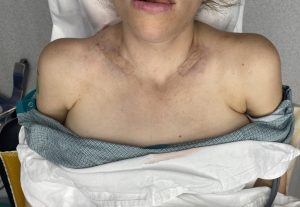
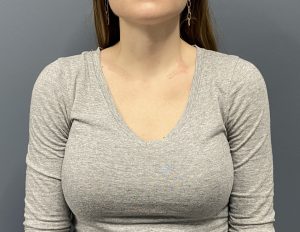
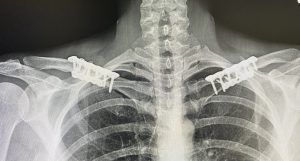
In shoulder narrowing surgery it is not uncommon to see asymmetry…and to date in my experience has always been on the left side. While conceptually removing more bone on the longer left side would help with the asymmetry…but there are limits as to how different the resections between the two sides can be. This is typically in the range of only 2.5 to 4.0mms as it is hard to resect much more than 2.5cms per side unless one is very tall. This has to do with being able to get the fixation plates in place before the bend on each end of the clavicle is reached.
Case Highlights:
1) Cis-females undergo shoulder narrowing surgery but at a lower incidence than transfemales.
2) Shoulder asymmetry due to different clavicle lengths is not uncommon amongst all patient populations seeking this surgery, most commonly on the left side.
3) Differential clavicle length reductions can be done and are usually not greater than 0.5cm on the longer side.
Dr. Barry Eppley
World-Renowned Plastic Surgeon

